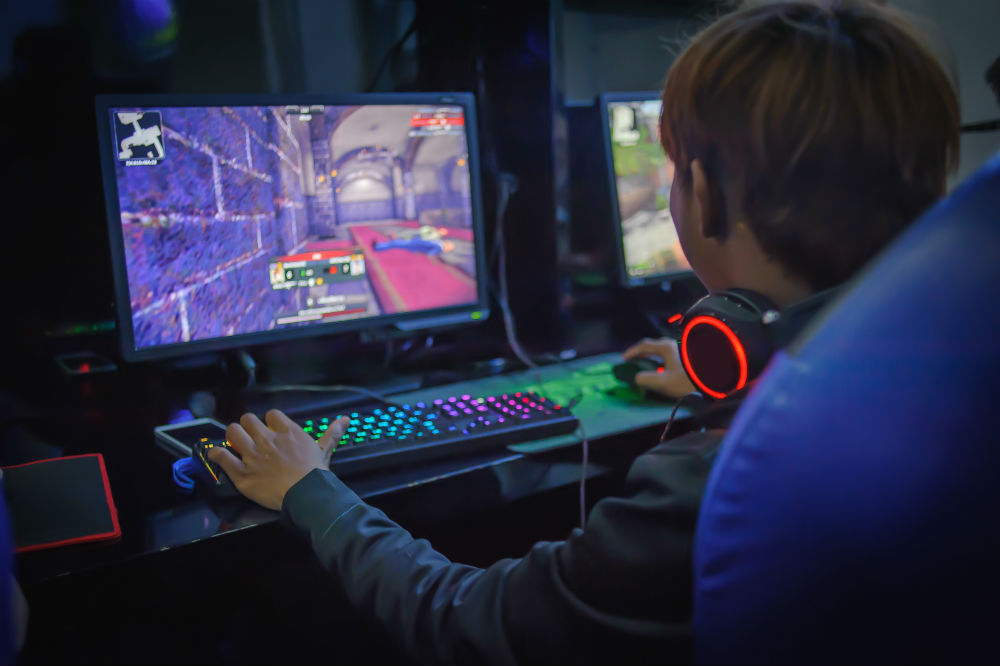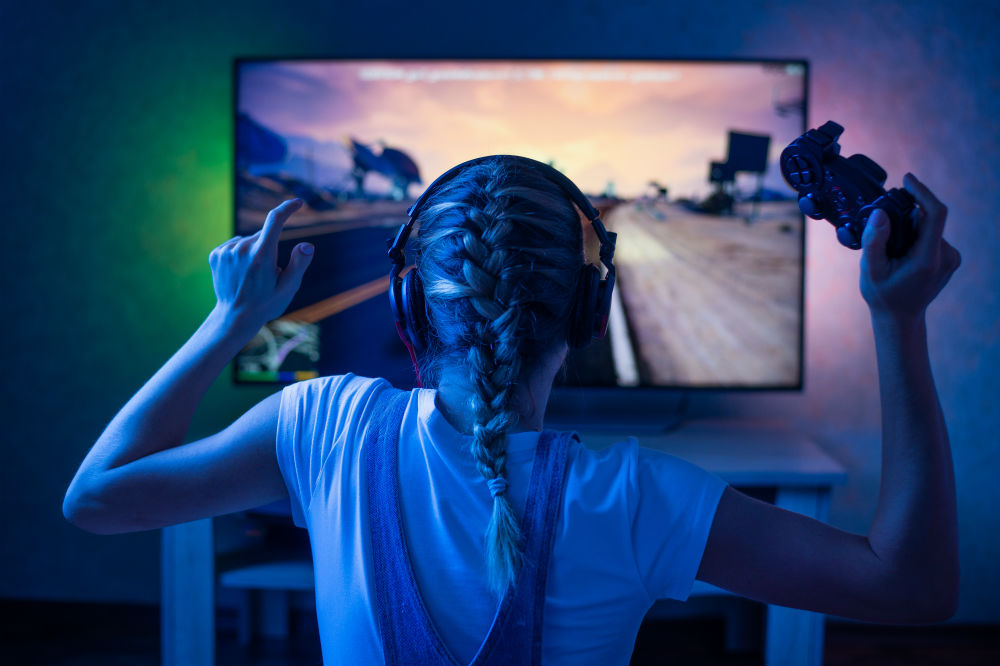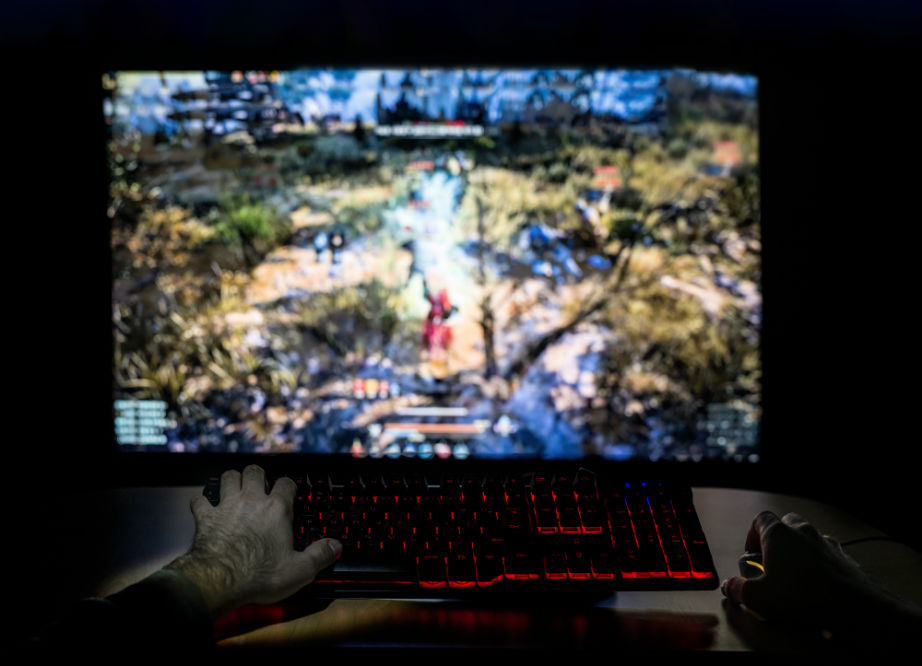The answer to the question "Do I need a gaming monitor?" is both yes and no. You really don't need a gaming monitor to play a game, but if you want to bring your gaming experience to the next level, yes you do. It is a matter of your personal taste and the quality of the gaming experience you seek.
As simple as that may sound, we think that it is only appropriate to answer in detail why gaming monitor can be a good investment if you are a gamer.
Why Is There a Need for a Gaming Monitor?
You may ask: "If you can play games on traditional monitors, why is there a need for a gaming monitor?"
Generally, gaming monitors are designed specifically for games that make them different from traditional or commonly used monitors. So, what is different in them that make them a gaming monitor? For this, you need to understand what refresh rate is and what response time is.

Refresh Rate and Response Time
The refresh rate is how fast a monitor generates the on-screen image, while the response time is the time a monitor takes to change the pixels color. Both factors play a huge role in good and ordinary visual experience when you are playing a game. Gaming monitors are designed with a high refresh rate and quick response time, which brings all the action to a new level.
You also need to make sure that both refresh rate and response time are linked together. For example, for a certain refresh rate, you need a specific response time, and a slight mismatch can ruin the visual experience for you. With the best refresh rate and response time, you can experience a more realistic gaming environment and enjoy more.
The refresh rate is described as Hertz, which is a measure of cycles per second or the number of times the monitor generates a new image in a second. Traditional monitors come with 60Hz, while gaming monitors offer you a higher rate, mostly around 120Hz.
This is why when buying a gaming monitor, make sure to check the Hz. If a brand claims they are selling a gaming monitor but the refresh rate is 60Hz, you better keep using your old monitor.
Checklist for Gaming Monitors
Here is the quick checklist of things you must look for before buying a gaming monitor:
- Panel size: When it comes to gaming, the bigger, the better
- Resolution: You may want to choose a higher resolution, like FHD (Full High-Definition), or higher than 1080p
- Panel technology: Which technology do you prefer, TN, IPS, or VA?
- Refresh rate: The higher, the better.
- Video inputs: Can you play with a computer only, or gaming consoles as well?
Do I Need a Gaming Monitor?
You can find varying opinions among gamers about gaming monitors. Some gamers believe these monitors are a waste of money, while others think if you don't have one, you are missing the real fun. So, who is correct? Actually, they both are, and the answer lies in the products available on the market.
There are gaming monitors that are no different than traditional monitors, while some models can really make a genuine difference. This is because from model to screen resolution to the size, you can find a great variety among gaming monitors.
1. Twisted Nematic
One of the most popular types of gaming monitors is Twisted Nematic, also known as TN screens, that are available in different sizes. They're known for their super fast response time. However, the contrast ratio is not great on some other versions.
2. Plane Switching
Another popular version is In-Plane Switching, also known as IPS screens. It is comparatively a newer technology and offers you the best image quality out there but their response time is not as quick as TN screens.
TN vs. PN
TN is the most popular type out there, with more than 90% of gamers using TN models. However, as IPS is a newer technology, it is getting popular as it also fixes a few issues with the TN monitors. For example, TN monitors are not that good if you move a lot in front of the screen when playing games, especially first-person shooting games.
From different angles, you can experience a change in colors, which is not the case with IPS models. The same is the issue with the curved-screen gaming monitors.
TN models are also popular because they are less expensive compared to IPS. Similarly, IPS also consumes a lot of energy compared to TN models.
3. Other Types
There are also other trending gaming monitors like VA and UltraWide Quad-HD that offers the best contrast ratio you can get. The heavyweight gaming monitor also comes with built-in software to provide the best possible visual experience for gamers.
In the end, it depends on your liking and the gaming experience you seek or the types of games you play.

What More Can Gaming Monitors Offer You?
Other than better gaming experience and quality visual output, gaming monitors also come with health benefits, especially for your eyes. As mentioned above, gaming monitors have a higher refresh rate, so they put less stress on your eyes as you don't have to process more information in less time. This is why gaming monitors are recommended for people who suffer from problems like stiff neck and headaches.
Also, gaming monitors are also a great option if you frequently switch between computer and gaming consoles when playing games. Gaming monitors usually allow you to connect both computer and gaming console. For this, you need to check the video input options to confirm if they work with both.
Final Words
Do I need a gaming monitor? Yes, for better gaming experience and more fun, you do. However, let's rephrase the question a little, "Do I really need a gaming monitor?" No, you don't. You certainly play a game on any monitor, but you have to sacrifice on true gaming experience and image quality.
A lot also depends on the type of gaming monitor you are buying. The most popular are VA, TN, and IPS, but all these may work best for different types of games. Buying the wrong one may ruin your gaming experience, so make sure you are buying one that suits your needs.
Happy gaming!










